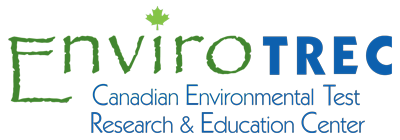In the coming days, a series of presentations will be posted on our website which will identify the key elements of Industry 4.0, Manitoba’s need to proceed in this direction, and participants who are already working with these technologies.
What is Industry 4.0?
Industry 4.0 represents an evolution in manufacturing.

Until recently, machines on the factory floor have had limited exchanges with a central control system. Data which was gathered was limited and not integrated in a wholistic view of the factory.
Industry 4.0 represents a plan to unify the factory assets so that they provide meaningful information to the enterprise, allowing for efficiency in operation and in marketing to their customers. I4.0 (the shortened form for Industry 4.0) represents an opportunity for recovery of manufacturing to the G7 countries. The following graphic shows the transition over time from Industry 1.0 (circa 1784), Industry 2.0 (circa1870), Industry 3.0 (circa 1970) and finally Industry 4.0 (circa today!)
Figure 1 – A general description of Industry 1.0 to Industry 4.0

Source: Automation World
Key Elements of Industry 4.0
Five elements are presented as being key to Industry 4.0.
One will find that the nomenclature will change between sources, but in the final analysis the content will begin to assemble into a coherent picture. The five elements which constitute Industry 4.0 are Big Data, Cyber Physical Systems, Internet of Things, Interoperability, and the Smart Factory.
Big Data is the first piece of I4.0. As the manufacturing floor becomes more digitally enabled, it will produce large volumes of data, both structured and unstructured. What is relevant to understanding Big Data is that what is done with the data is what matters most. Big Data can be analyzed for insights that lead to better decisions and strategic business moves. This requires both new software and significantly improved hardware to support this concept. Our traditional business systems will often bury the data and move on to the next transaction rather than review the data for intelligence and insights.
Cyber Physical Systems (or CPC’s), are integrations of computation, networking, and physical processes. In CPC’s, computers and networks monitor and control physical processes with feedback loops. The CPC system uses software to interpret actions and tracks results. The CPC notion centers on computers and software being embedded in devices where the first use is not computation but rather a loop of action and machine learning. CPC is also an engineering discipline that is focused on technology. CPC has a strong foundation in mathematics.
The Internet of things (IoT) refers to a network of physical devices, vehicles, home appliances, and other items which are embedded with electronics, software, sensors, actuators, and the connectivity which enables these technologies to connect, collect and exchange data.
IoT involves extending Internet connectivity beyond standard devices such as desktops, laptops, smartphones, and tablets to any range of non-internet-enabled physical devices and everyday objects. Embedded with technology, these devices can communicate and interact over the Internet and they can be remotely monitored and controlled.
The Industrial Internet of Things (IIOT) advances these ideas to consider events and technologies on the factory floor. As a concluding idea here, cyber security is a very important feature to the Industrial Internet of Things.
Interoperability refers to the need to make the most of this digital revolution, to harness the full power of Industry 4.0, and to capitalize on the potential savings that automation will bring. This requires companies to join IIoT platforms and operating systems across multiple production lines and subsystems. The challenge that Interoperability brings to Industry 4.0 is that of integrating the multitude of legacy —— and often proprietary — systems that were not designed to communicate across the production floor. Constraints are found as a result in these environments which is often due to the lack of standards.
Smart Factory describes an environment where machinery and equipment are able to improve processes through automation and self-optimization. The benefits of a Smart Factory extend beyond the physical production of goods to functions such as planning, supply chain logistics, and even product development.
Smart Factories make extensive use of IoT sensors and devices which connect machines and enables visibility into their condition as well as into factory processes. Increasingly sophisticated analytics and applications based on Artificial Intelligence and machine learning handle many of the routine tasks, freeing up people to focus on handling exceptions and making higher-level decisions. Robots are indeed a feature to the Smart Factory and are expected to populate these factories for routine work while working alongside people.
EnviroTREC’s role in Industry 4.0
Our role at EnviroTREC is to support development of the aerospace sector in Manitoba.
Our organization has been responsible for the development and ongoing support of the GLACIER Facility, which is located near Thompson Manitoba. This facility is used by Rolls-Royce and Pratt & Whitney to test (for icing and otherwise) their Gas Turbine Engines.
As a further example of our work, EnviroTREC participated in the development and writing of Manitoba’s Technology RoadMap in 2014 with further revisions in 2017. This work was done in concert with the Manitoba Aerospace Research and Technology Committee.
Our interest in promoting Industry 4.0 is to support Manitoba’s aerospace sector going forward into a post-COVID world, which would entail a significant capability in digital configuration and management.
For further Reading about Industry 4.0
The following references are provided for readers which are interested in Industry 4.0
- BDC, a general story about I4.0
- Epicor, What is Industry 4.0…
- Deutsche Bank, Germany’s plan for I4.0
